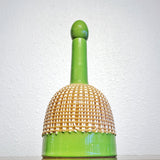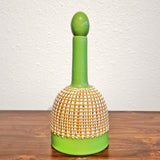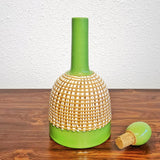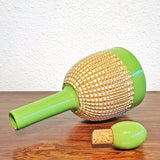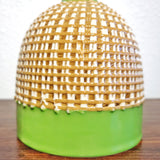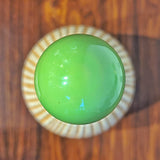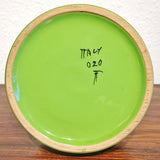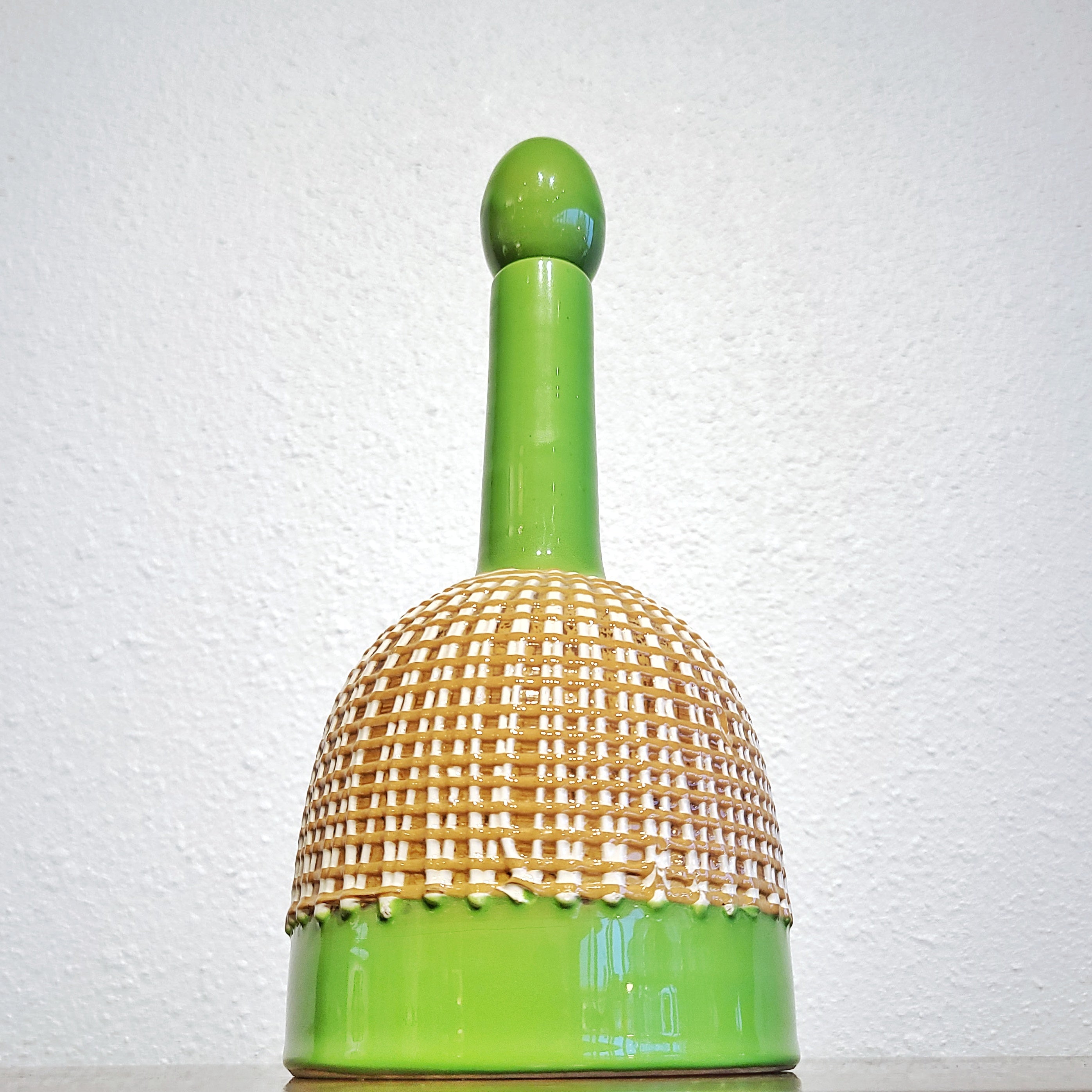
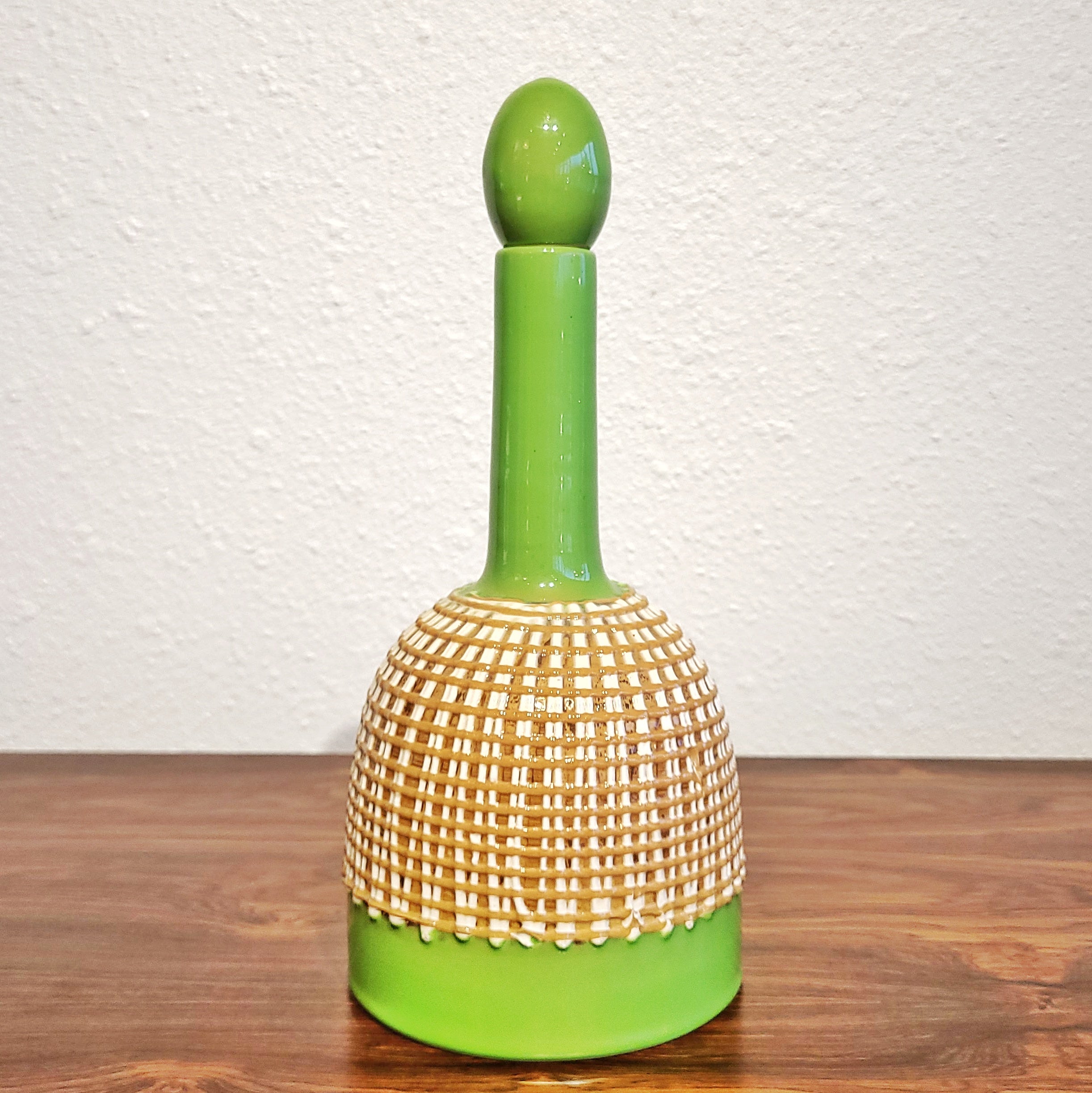
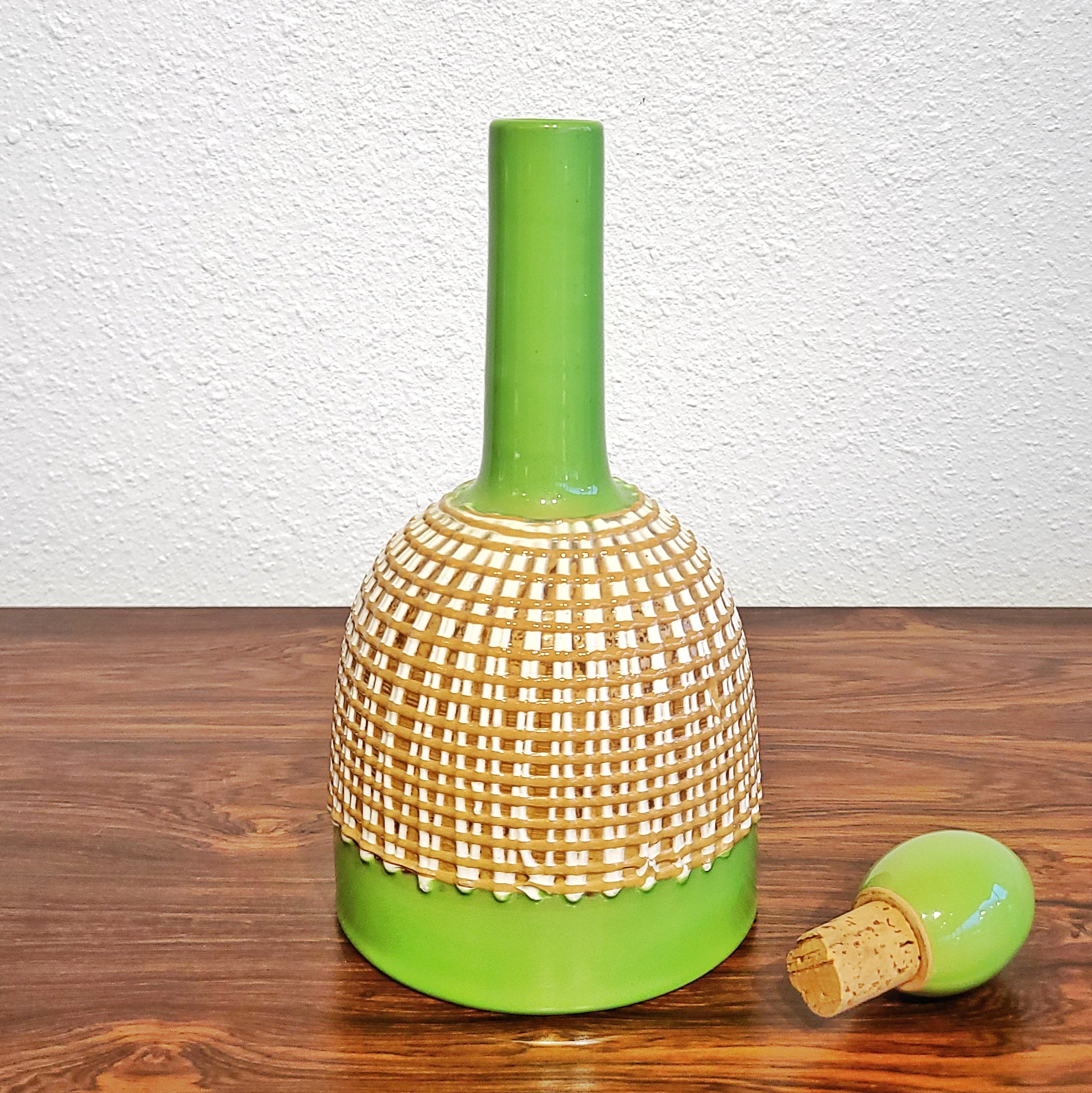
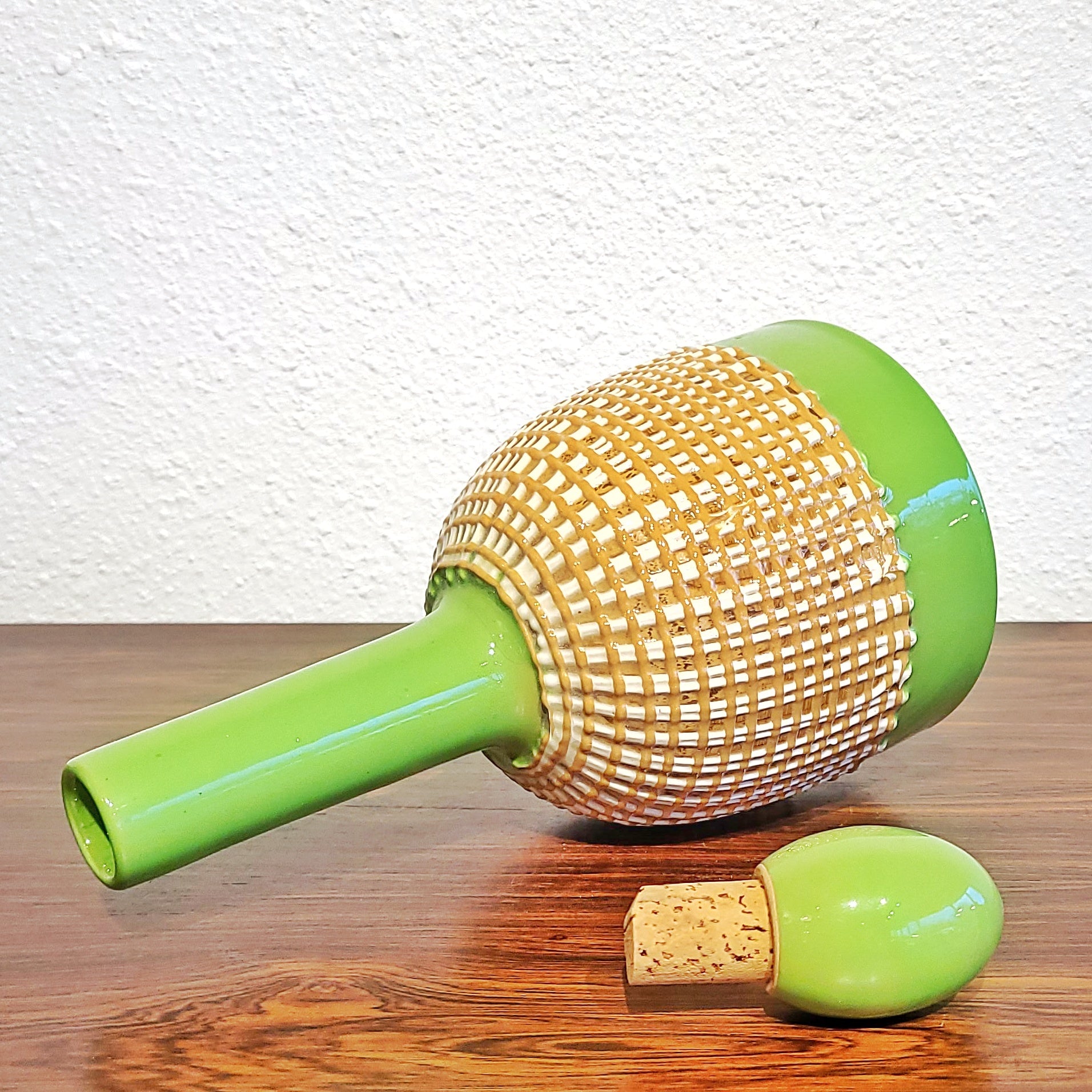
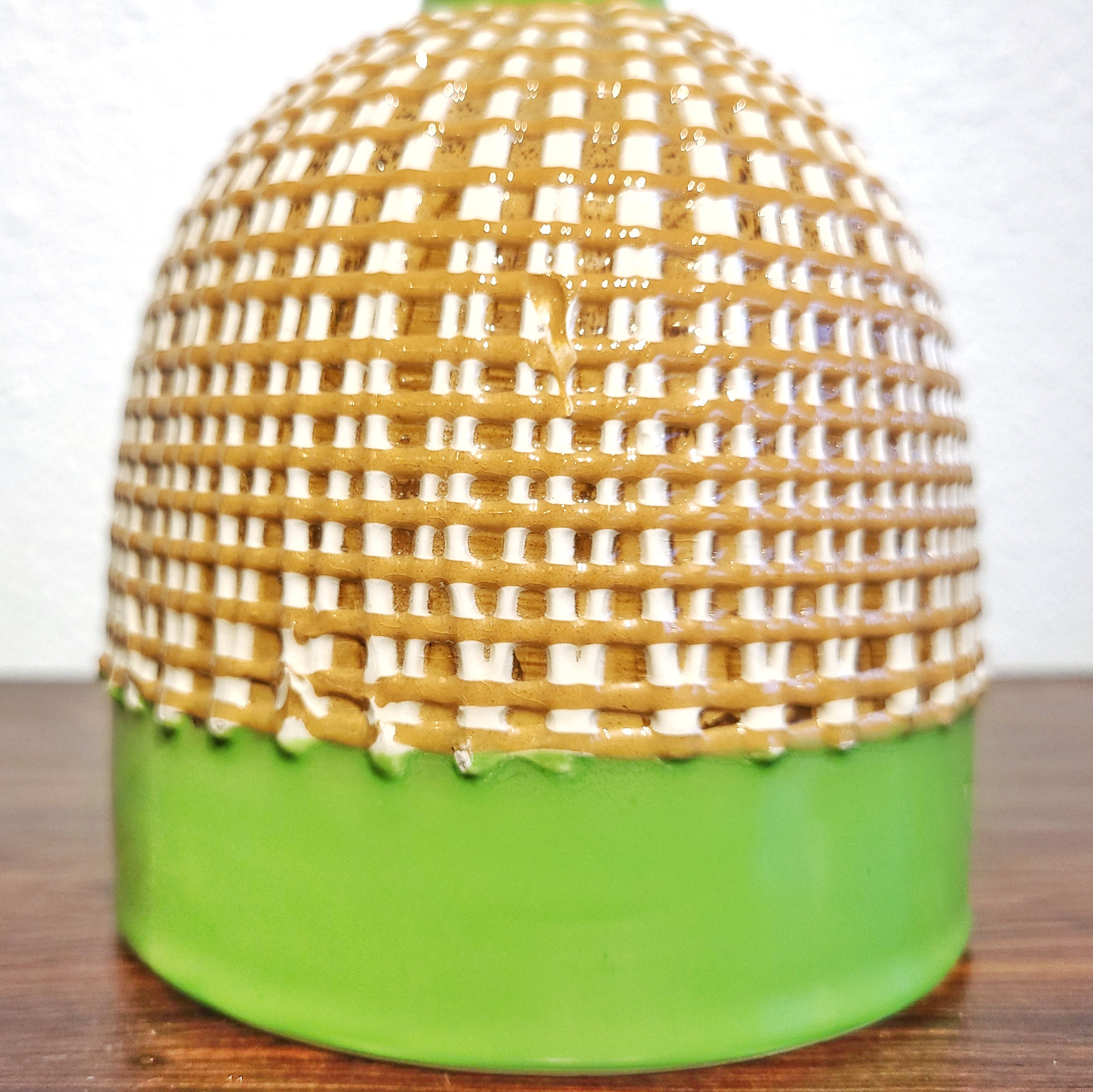

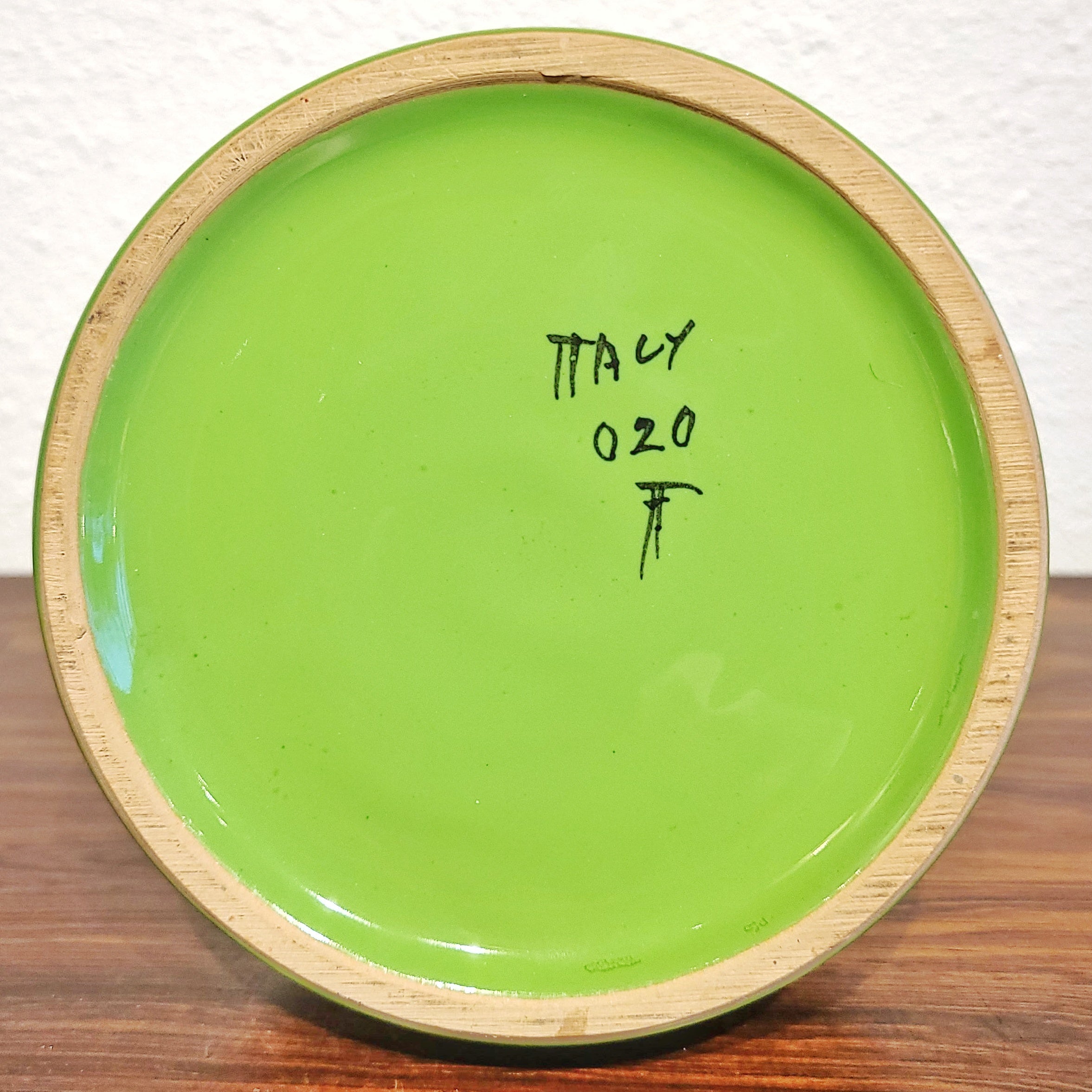
GREEN FRATELLI FANCIULLACCI DECANTER WITH STOPPER
CONTACT US HERE ABOUT THIS ITEM.
A bright green, pop-era decanter and stopper with a latticework skirt of thick, white-and-butterscotch “icing” from the Bros. Fanciullacci of Florence. Its long, slender neck rises from an ample bell-shaped reservoir to be topped with an egg-shaped stopper that fits loosely in the opening. We’re frankly not sure whether the attached cork is intended to fit so loosely—or if it has shrunk over the years. Either way, it could easily be replaced if a tighter fit were preferred.
FRATELLI FANCIULLACCI was born of a family whose roots in Italian ceramics date to the 1700s. The Fanciullaccis had collaborated with the Richard-Ginori porcelain company in Sesto Fiorentino (a municipality of Florence) since its 1737 founding. They were so invested in the concern that when its founder, Carlo Ginori, died in 1757, they attempted to wrest control from his son Lorenzo. Carlo’s widow, Mariana Garzoni Venturi, thwarted the coup and acted as interim manager until the minor Lorenzo came of age.
The most artistically important Fanciullacci at Ginori during the 18th and early 19th centuries was arguably Giovanni Battista Fanciullacci. He joined the company as a miniaturist and porcelain painter in 1759 and rose to head the painting department in 1772. He was named factory director in 1806, retiring two decades later. His rare works are highly coveted by collectors today.
In 1862 (sometimes 1858 is cited), Raffaello Fanciullacci (1803-1881), another former Ginori factory director, established his own pottery in nearby Capraia Fiorentino: Ceramiche Capraia. The new company initially produced simple, utilitarian wares. Raffaello was joined by his son Demetrio in the late 1870s, and subsequently by Demetrio’s four sons. By 1880, the pottery officially became FRATELLI FANCIULLACCI, i.e., the Bros. Fanciullacci.
In 1911, with the arrival of the Florence-Pisa railroad, operations moved from Capraia to nearby Montelupo. The new line provided easy, inexpensive transport to vital Italian cities, and the relocation was such a boon that, by 1914, the company had over 1,000 different molds. FANCIULLACCI’s offerings were among Italy’s most appealing, and the pottery became the area’s largest employer.
During the remaining decades of the first half of the 20th century, the firm slowly branched into a rich repertoire of artistic products; the golden age for FRATELLI FANCIULLACCI blossomed. The family famously stayed in sync with the pulse of both Italian and American (their main export destination) consumers. Work was produced almost immediately in the latest styles: Raffaellesco, Istoriati, Art Deco, Art Nouveau, Futurism, Cubism, Modernism, and Avant-Garde.
FRATELLI FANCIULLACCI was one of the few ceramics factories able to operate throughout WWII. At war’s end, Colorificio, parent company of Bitossi Ceramiche, assumed control, though the family ran the business with little oversight. By the late 1950s, work was back up to full speed, and new international markets soon accounted for 90 percent of production.
Disaster struck on November 4, 1966, with a major flood of the Arno—the worst in over 400 years. It resulted in many deaths and the loss of countless art treasures and manuscripts. FRATELLI FANCIULLACCI was hard hit: priceless molds (some dating to its founding), all kilns, raw clay, and finished export stockpiles were destroyed. The company shut down for over a year, and many talented artists and craftsmen left for other work.
Production shifted to a temporary Florence plant while the Montelupo site was renovated. However, both output and quality suffered dramatically. FRATELLI FANCIULLACCI attempted to reestablish itself but never regained its former success. The company ceased all operations in 1988.
DETAILS
Maker – FRATELLI FANCIULLACCI
Production Period/Year – 1960s
Designer – UNKNOWN
Design Period/Year – 1960s
Origin – ITALY
Styles/Movements – MID-CENTURY MODERN; BOHO CHIC; ITALIAN
Materials – CERAMIC
Colors – KELLY, TAN, WHITE
Condition – Excellent vintage condition. May show minor signs of previous ownership and use.
Dimensions – 5" DIAM. × 11 ½" H

